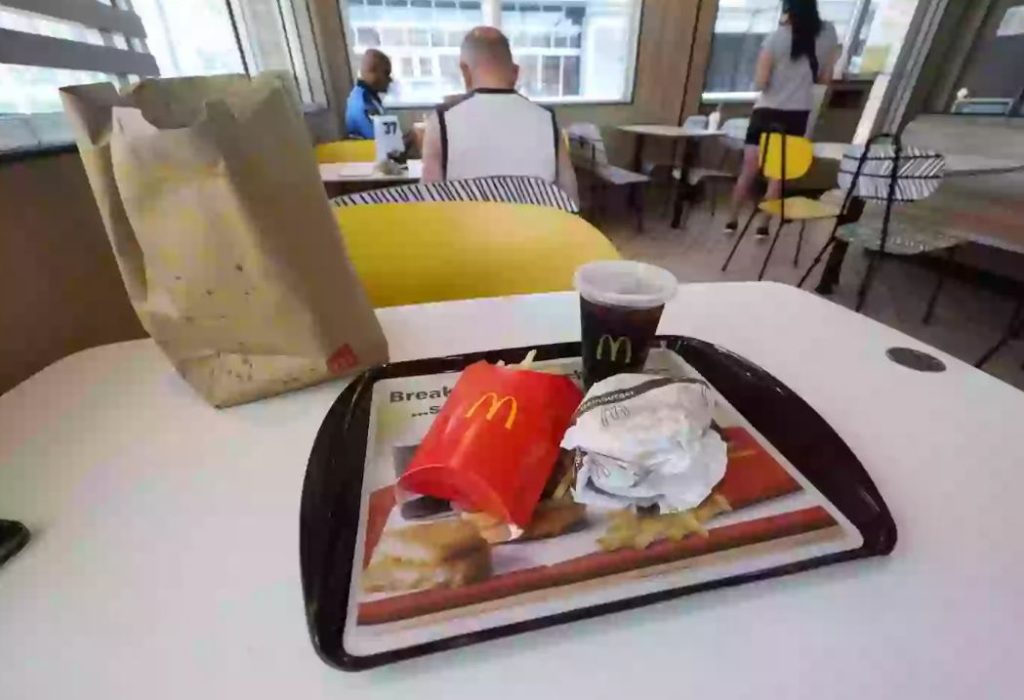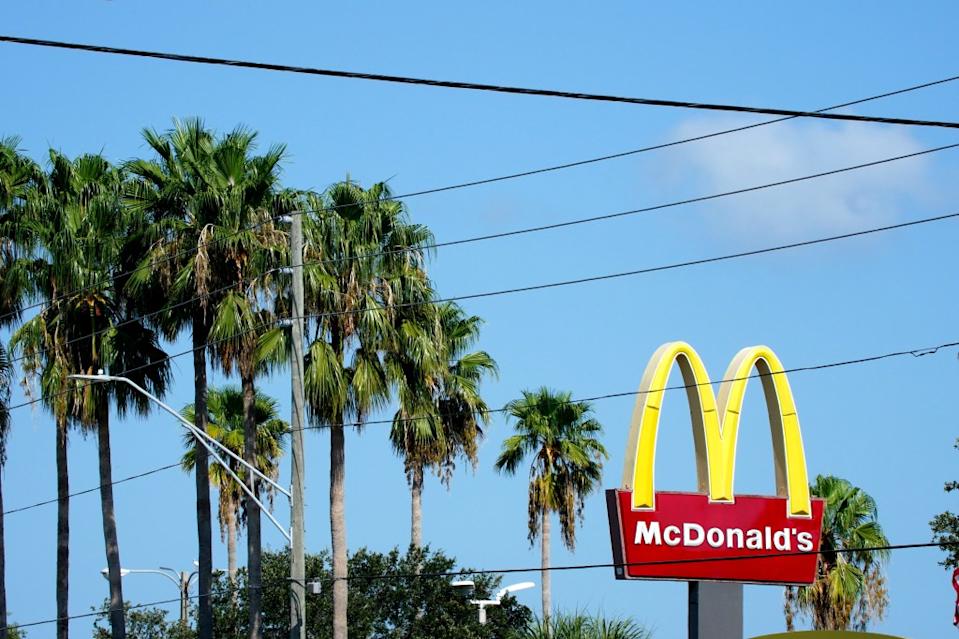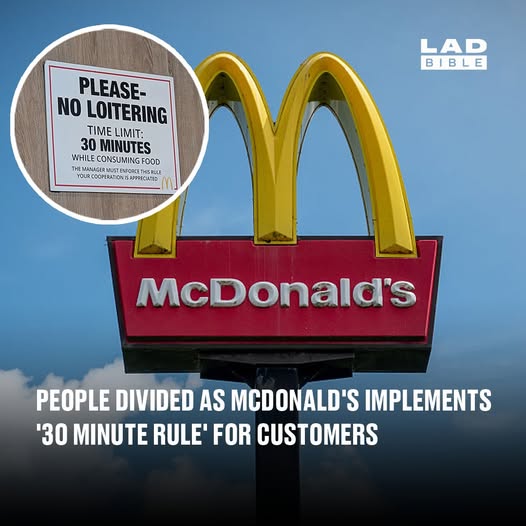A McDonald’s has recently rolled out a sign in its dining area stating:
“Please – no loitering. Time limit: 30 minutes while consuming food. The manager must enforce this rule. Your cooperation is appreciated.”
Find out more about new rule in the article below.
Why Is This Happening?
1. Boosting Table Turnover
Fast-food restaurants thrive on high customer turnover, a strategy dating back to McDonald’s original “Speedee Service System” model from the 1950s. Limiting mealtime discourages long-term occupation by a few, freeing up seating for paying customers.

2. Addressing Loitering Issues
Employees and managers have reported frequent loitering — often by teenagers, students, and occasionally individuals experiencing homelessness. These patrons may linger for hours, occupying booths with minimal purchases, using free Wi‑Fi, air conditioning, and restroom facilities.
3. Improving Comfort and Safety
Some argue that time limits can help maintain a safer, more family-friendly atmosphere — removing potential troublemakers and making space available when it’s needed most.
Public Reaction: Mixed But Passionate
Opinions are sharply divided.
Some customers and staff support the policy:
“These rules are here for a reason,” said one Redditor, noting loiterers “probably groups of teens who cause issues.”
Another explained the rule helps staff “remove the homeless and teens” and maintain a pleasant experience for paying families.
Others pushed back strongly:
“What happened to McDonald’s being a family-friendly restaurant for kids to play at like in the ’90s?”
In Sedona, Arizona, one diner criticized the sign, likening the experience to “school lunch” rather than a casual fast-food visit. Even long-time regulars were upset: In Milwaukee, members of a morning “Breakfast Club” expressed embarrassment at being asked to leave after their daily routine. “I felt very hurt,” said one senior patron.
Broader Trend Across Fast Food and Restaurants
McDonald’s isn’t alone. Wendy’s and Burger King have posted similar 30-minute eat-in limits. In New York City, select restaurants have recently introduced 90-minute dine-in caps, often due to space and staffing issues post‑pandemic. These strategies are increasingly common in fast food, cafes, and even public dining spaces as businesses aim to balance hospitality with operational efficiency.
Operational Considerations
For staff, enforcing the rule can reduce conflicts tied to loitering or overstayed visits. However, it may also alienate loyal customers, like seniors or student groups, who regularly use the space as a community hub. Franchise owners argue that consistent table turnover is essential to profitability and fairness.
What It Means for You
If you’re grabbing a quick meal, this rule is unlikely to affect you; 30 minutes is ample time to eat. For longer meals, group meetups, or casual hangouts, consider alternative venues like diners, coffee shops, or community centers. Need Wi‑Fi or space to study? Check local cafés or public libraries, which often welcome such usage without strict time limits.

Final Thoughts
McDonald’s and similar chains have introduced the 30-minute dine-in rule to address loitering, maintain turnover, and improve the environment for paying customers. While businesses cite benefits like efficiency and safety, regular customers — especially those seeking a casual, communal atmosphere — may feel unwelcome. At the end of the day, the policy reflects a balancing act between fast-food convenience and social responsibility. Whether you support or oppose the rule, it signals a shift in how businesses manage shared public spaces.

















